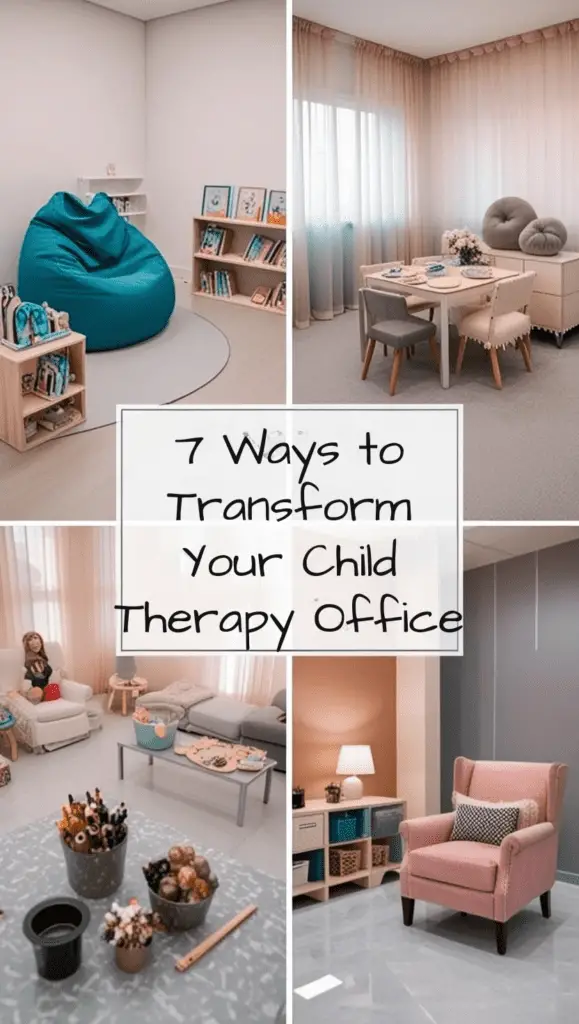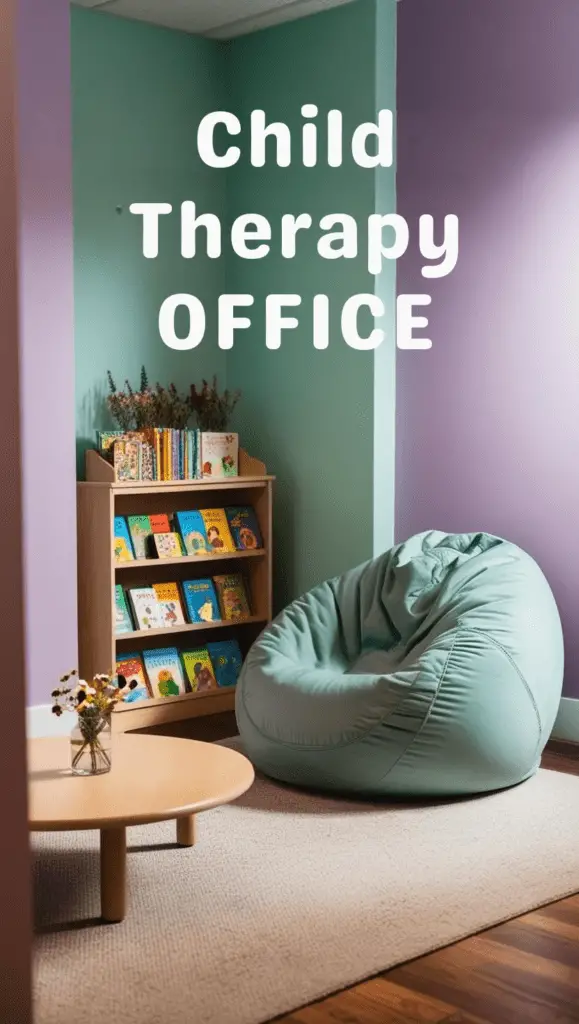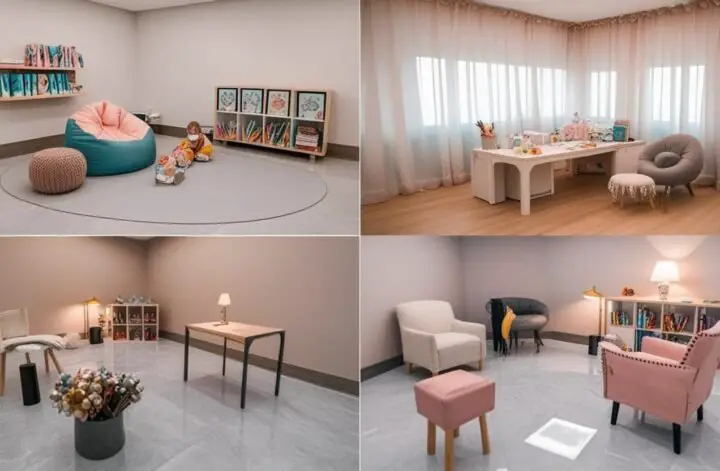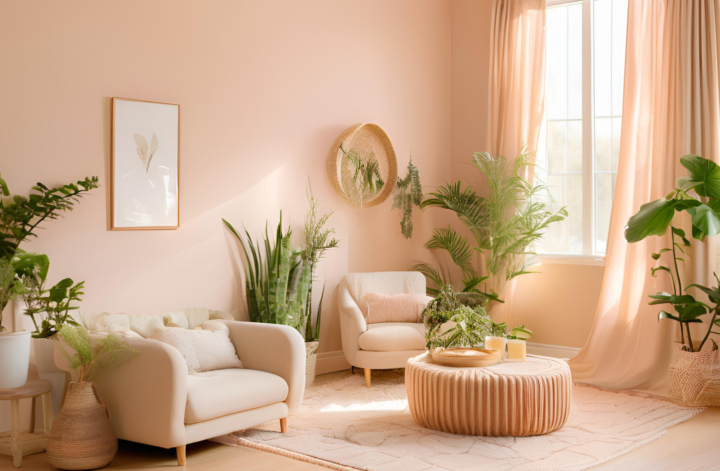Creating a welcoming and supportive environment in a child therapy office is essential for building trust and comfort. A thoughtfully designed space not only reduces anxiety but also encourages creativity, self-expression, and healing. Below is a listicle with actionable steps to recreate an inviting child therapy office decor style. Each tip comes with detailed illustration prompts that can help you visualize the final outcome. This guide will walk you through color palettes, furniture choices, playful decor, and interactive elements – all designed to create a serene yet stimulating environment for young clients.

1. Set a Calming Foundation with a Thoughtful Color Palette
Actionable Steps:
- Choose Soft Hues: Opt for gentle pastels, light blues, soft greens, and warm neutrals that create a soothing backdrop.
- Use Accent Colors Sparingly: Incorporate pops of brighter colors in specific areas such as accent walls, artwork, or playful decor items.
- Balance Warm and Cool Tones: This helps maintain a balance that is both calming and inviting for children.

2. Create Zones for Different Activities
Actionable Steps:
- Designate a Quiet Zone: Set up a reading nook with comfortable seating, soft pillows, and a small bookshelf filled with age-appropriate books.
- Interactive Play Area: Include a corner with creative supplies, interactive toys, and sensory play materials.
- Therapy Work Zone: Arrange a desk or table with accessible art supplies for expressive therapy sessions.
3. Incorporate Natural Elements for a Warm, Inviting Atmosphere
Actionable Steps:
- Add Greenery: Use easy-to-care-for indoor plants like succulents or small ferns to bring a touch of nature indoors.
- Natural Materials: Choose furniture and decor items made from wood or bamboo to create a natural, organic feel.
- Natural Light: Maximize natural light with large windows or sheer curtains that allow sunlight to filter in softly.

4. Select Child-Friendly Furniture That is Both Functional and Fun
Actionable Steps:
- Ergonomic Seating: Invest in chairs and sofas that are designed for both comfort and durability, suitable for children.
- Multifunctional Pieces: Use furniture that serves multiple purposes, such as storage benches that double as seating.
- Size-Appropriate Designs: Ensure all pieces are scaled appropriately for children to use safely and comfortably.

5. Engage the Senses with Art and Interactive Decor
Actionable Steps:
- Wall Art: Choose murals or artwork that spark the imagination; consider themes like nature, fantasy, or abstract designs.
- Interactive Boards: Install whiteboards, chalkboards, or magnetic boards where children can freely express themselves.
- Textural Variety: Add elements like soft rugs, textured cushions, and fabric wall hangings to create a rich sensory experience.

6. Incorporate Playful Elements That Encourage Creativity and Expression
Actionable Steps:
- Themed Decor: Consider decorating with themes that resonate with children, such as under-the-sea, space adventures, or enchanted forests.
- DIY Projects: Involve children in creating artwork for the office. Rotating displays of their creative work can boost self-esteem and personalize the space.
- Interactive Furniture: Include items like a small chalkboard table or an easel that encourages spontaneous artistic expression during sessions.
Image Prompt:
Visualize a space inspired by a magical under-the-sea theme: walls adorned with oceanic murals, playful decals of fish and sea creatures, and interactive art stations that invite children to create and display their work. A small easel stands in one corner, next to a table covered in colorful, kid-friendly supplies, fostering a sense of creativity and exploration.
7. Ensure a Flexible Layout for Adaptability and Comfort
Actionable Steps:
- Modular Design: Use furniture and decor items that can be easily rearranged to suit different therapy sessions and activities.
- Safe, Open Spaces: Ensure there is ample room for movement, reducing the risk of accidents while allowing freedom for physical expression.
- Personal Touches: Allow for personalization by including elements that can be easily swapped out or updated, such as seasonal decor or rotating art displays.
Bringing It All Together
Creating a child therapy office that is both inviting and functional requires a careful balance of aesthetics and practicality. By setting a calming color palette, creating distinct zones for various activities, incorporating natural elements, choosing child-friendly furniture, engaging the senses with art and interactive decor, adding playful elements, and ensuring a flexible layout, you can transform your therapy space into a haven of healing and creativity.
As you embark on this journey, remember that the ultimate goal is to create a safe, nurturing, and inspiring environment. Each element, from the soft hues on the walls to the interactive art stations, plays a role in establishing a space where children feel seen, heard, and understood.
Next Steps:
- Plan Your Layout: Begin by sketching a floor plan that designates areas for quiet time, play, and therapy sessions. Experiment with different arrangements until you find the most harmonious flow.
- Select Key Pieces: Identify and purchase key furniture items that fit the child-friendly criteria, prioritizing ergonomics and versatility.
- Personalize the Space: Invite input from children who use the space. Their insights can be invaluable in creating a decor that truly resonates with them.
- Update Regularly: The needs and preferences of children evolve over time, so consider regular updates or rotations in decor to keep the environment fresh and engaging.

By following these steps and incorporating these design ideas, you can craft a child therapy office that not only meets the practical needs of therapy sessions but also inspires creativity and comfort. Whether you’re revamping an existing space or starting from scratch, each of these elements plays a crucial role in creating an environment that supports both the emotional and developmental needs of children.
Embrace the process of transformation—each thoughtful addition, every carefully chosen detail, contributes to building a space that is as unique and nurturing as the children it serves. With a little creativity and a lot of heart, your therapy office can become a place where healing truly begins.



